 W
WAltec Lansing, Inc. is a U.S. audio electronics company founded in 1927. Their primary products are loudspeakers and associated audio electronics for professional, home, automotive and multimedia applications.
 W
WAnsco was the brand name of a photographic company based in Binghamton, New York, which produced photographic films, papers and cameras from the mid-19th century until the 1980s. In the Late 1880s ANSCO's predecessor, Anthony and Scovill, bought the Goodwin Camera & Film Company. Hannibal Goodwin invented the flexible photographic film, which should have made Anthony Scovill the leader in the amateur photography business. But George Eastman copied the patented process and immediately set out to compete against Anthony Scovill. The ruthless behavior of Eastman nearly drove the now named ANSCO out of business, but a settlement in 1905 saved the company from bankruptcy. Eastman Kodak got away cheaply on this legal proceeding. In 1928 AGFA merged with ANSCO to allow it to compete in the worldwide photographic market like its competitors, Kodak and Zeiss. This joint company added many AGFA cameras and accessories to its sales in the USA as a result. In the months after the bombing of Pearl Harbor, the US Government seized AGFA-ANSCO. This now government-run business continued to survive as a hostile alien property. During this period, the organization was renamed GAF. Throughout the postwar period the concern sold rebadged versions of cameras made by other manufacturers, including Agfa and Chinon. A Minolta-built Ansco model was the first 35 mm camera in space and their film was used in space, too.
 W
WBausch + Lomb is an eye health products company based in Laval, Quebec, Canada. It is one of the world's largest suppliers of contact lenses, lens care products, pharmaceuticals, intraocular lenses, and other eye surgery products. The company was founded in Rochester, New York, in 1853 by optician John Bausch and cabinet maker turned financial backer Henry Lomb. Until its sale in 2013, Bausch + Lomb was one of the oldest continually operating companies in the United States.
 W
WNafees Bin Zafar is a visual effects and computer graphics software engineer of Bangladeshi origin based in Los Angeles, USA. Zafar currently works as Principal Engineer at animation studio DreamWorks Animation. In 2008, Zafar received an Academy Scientific and Technical Award thus becoming the first person of Bangladeshi origin to win an Academy Award. In 2015, he won a Technical Achievement Award.
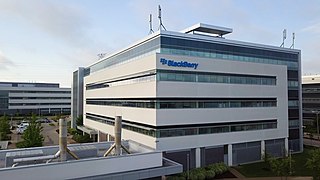 W
WBlackBerry Limited is a Canadian multinational company specialising in enterprise software and the Internet of things. Originally known as Research In Motion (RIM), it developed the BlackBerry brand of interactive pagers, smartphones, and tablets. It transitioned to an enterprise software and services company under Chief Executive Officer John S. Chen. Its products are used by various businesses, car makers, and government agencies. They include BlackBerry Cylance's artificial intelligence based cyber-security solutions, the BlackBerry AtHoc emergency communication system (ECS) platform; the QNX real-time operating system; and BlackBerry Enterprise Server, a Unified Endpoint Management (UEM) platform. BlackBerry was founded in 1984 as Research In Motion by Mike Lazaridis and Douglas Fregin. In 1992, Lazaridis hired Jim Balsillie, and Lazaridis and Balsillie served as co-CEOs until January 22, 2012, when Thorsten Heins became president and CEO. In November 2013, John S. Chen took over as CEO. His initial strategy was to subcontract manufacturing to Foxconn, and to focus on software technology. Currently, his strategy includes forming licensing partnerships with device manufacturers such as TCL Communication and unifying BlackBerry's software portfolio.
 W
WBell and Howell is a U.S.-based services organization and former manufacturer of cameras, lenses and motion picture machinery, founded in 1907 by two projectionists, and was originally headquartered in Wheeling, Illinois. The company is now headquartered in Durham, North Carolina, and currently provides services for automated equipment in enterprise-level companies.
 W
WDuncan Brinsmead is a Canadian software programmer and developer of simulations of natural environments in 3D computer graphics (CGI). He created the Maya Paint Effects for digitally painting instances like plants or hair in a virtual 3D environment. In 2008, together with Jos Stam, Julia Pakalns and Martin Werner he received an Academy Award for Technical Achievement for the design and implementation of the Maya Fluid Effects system. Fluid Effects are based on the simulation of fluid mechanics in software and used for simulating natural phenomena such as fog, steam or smoke.
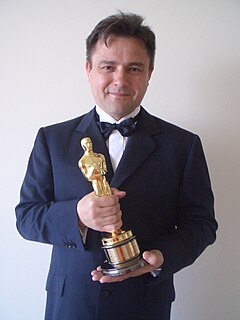 W
WHorst Burbulla is an Oscar-winning German inventor and entrepreneur.
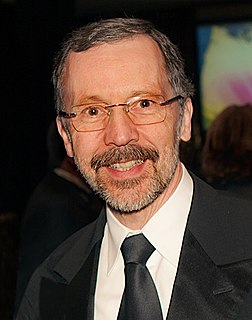 W
WEdwin Earl "Ed" Catmull is an American computer scientist who was co-founder of Pixar and president of Walt Disney Animation Studios. He has been honored for his contributions to 3D computer graphics, including the 2019 ACM Turing Award.
 W
WDavid B. Coons is a computer graphics professional and longtime CGI expert.
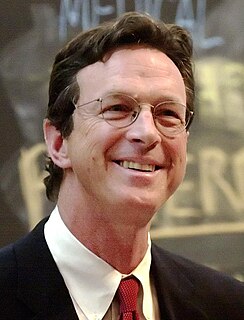 W
WJohn Michael Crichton was an American author and filmmaker. His books have sold over 200 million copies worldwide, and over a dozen have been adapted into films. His literary works are usually within the science fiction, techno-thriller, and medical fiction genres, and heavily feature technology. His novels often explore technology and failures of human interaction with it, especially resulting in catastrophes with biotechnology. Many of his novels have medical or scientific underpinnings, reflecting his medical training and scientific background.
 W
WCharles Crawford Davis was an American audio engineer known for his innovations in the motion picture industry.
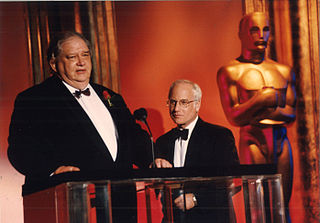 W
WPeter Denz is a German engineer, inventor, entrepreneur and Oscar winner.
 W
WDavid DiFrancesco,, is a photoscientist, inventor, cinematographer, and photographer. He is a founding member of three organizations which pioneered computer graphics for digital special effects and film with Edwin Catmull and Alvy Ray Smith, including; New York Institute of Technology Computer Graphics Lab, Lucasfilm Computer Division, and Pixar, financed by Steve Jobs.
 W
WDuArt Film & Video is an American film and recording studio founded in New York City by Al Young in 1922. DuArt has been involved with a number of films over its history, such as Dirty Dancing, The Cider House Rules and Forrest Gump, pioneering in a number of filmmaking technologies. Founder Al Young built one of the earliest continuous 35-millimeter processing machines in 1927, DuArt processed the first film in Eastmancolor negative in 1950, and DuArt also worked with CBS on EVR consumer video-player-based special-motion film in 1966. In 1979, DuArt was presented with an Academy Award for Technical Achievement for their development of the Frame-Count cueing system. During the 1980s, the lab became an industry leader in Super-16mm blow-ups, enabling independent filmmakers the opportunity to compete in the theatrical marketplace with low-budgeted films. In 2000, owner and Chairman Irwin Young was awarded the Gordon E. Sawyer Award by the Academy of Motion Picture Arts and Sciences for technological contributions to the motion picture industry.
 W
WRobert Fate is an American author, best known for the Baby Shark series of mystery novels.
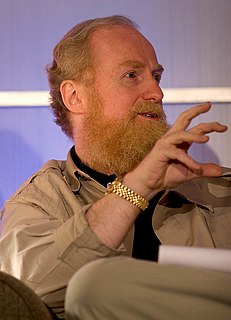 W
WBran Ferren, is an American technologist, artist, architectural designer, vehicle designer, engineer, lighting and sound designer, visual effects artist, scientist, lecturer, photographer, entrepreneur, and a prolific inventor. Ferren is the former President of Research and Development of Walt Disney Imagineering as well as founder of Associates & Ferren, a multidisciplinary engineering and design firm acquired in 1993 by Disney. He is Chief Creative Officer of Applied Minds, which he co-founded in 2000 with Danny Hillis. Apple's "pinch-to-zoom" patent, which features prominently in its legal battle with Samsung, was invalidated by the US Patent and Trademark Office in 2013 based on a 2005 patent by Ferren and Hillis for multi-touch gestures.
 W
WFlash Film Works is a computer graphics company that provides visual effects for films, television shows and commercials. It is owned by director William Mesa and is located in Los Angeles, California.
 W
WNickson Fong is a Singaporean Computer Graphics Artist and the first Singaporean to receive an Academy Award.
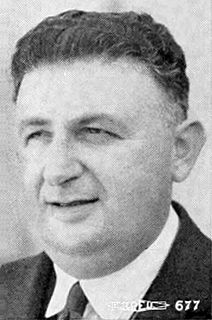 W
WKarl W. Freund, A.S.C. was an Austrian cinematographer and film director best known for photographing Metropolis (1927), Dracula (1931), and television's I Love Lucy (1951-1957). Freund was an innovator in the field of cinematography and is credited with the invention of the unchained camera technique.
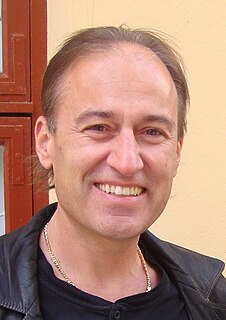 W
WMarkus Gross is a Professor of Computer science at the Swiss Federal Institute of Technology Zürich (ETH), head of its Computer Graphics Laboratory, and the director of Disney Research, Zurich. His research interests include physically based modeling, computer animation, immersive displays, and video technology. He has published more than 400 scientific papers on algorithms and methods in the field of computer graphics and computer vision, and holds more than 30 patents. He has graduated more than 50 PhD students so far.
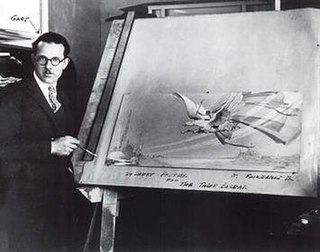 W
WAnton Grot was a Polish art director long active in Hollywood. He was known for his prolific output with Warner Brothers, contributing, in such films as Little Caesar (1931), and Gold Diggers of 1933 to the distinctive Warners look and style. According to a TCM profile, he showed a "flair for harsh realism, Expressionistic horror and ornate romantic moods alike".
 W
WPatrick M. Hanrahan is an American computer graphics researcher, the Canon USA Professor of Computer Science and Electrical Engineering in the Computer Graphics Laboratory at Stanford University. His research focuses on rendering algorithms, graphics processing units, as well as scientific illustration and visualization. He has received numerous awards, including the 2019 Turing Award.
 W
WByron Conrad Haskin was an American film and television director. He is known for directing The War of the Worlds (1953), one of many films where he teamed with producer George Pal.
 W
WIndustrial Light & Magic (ILM) is an American motion picture visual effects company that was founded in May 1975 by George Lucas. It is a division of the film production company Lucasfilm, which Lucas founded, and was created when Lucas began production of the film Star Wars.
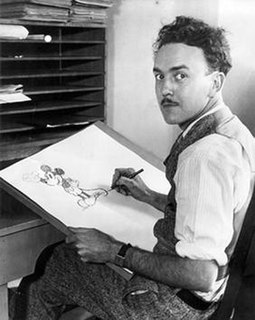 W
WUbbe Eert "Ub" Iwwerks was an American animator, cartoonist, character designer, inventor, and special effects technician, who designed Oswald the Lucky Rabbit and Mickey Mouse. Iwerks produced alongside Walt Disney and won numerous awards, including multiple Academy Awards.
 W
WJames Kajiya is a pioneer in the field of computer graphics. He is perhaps best known for the development of the rendering equation.
 W
WMichael Kass is an American computer scientist best known for his work in computer graphics and computer vision. He has won an Academy Award and the SIGGRAPH Computer Graphics Achievement Award and is an ACM Fellow.
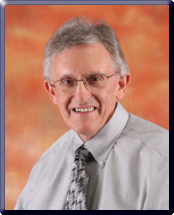 W
WD. Broadus Keele Jr., also known simply as Don Keele or D. B. Keele Jr., is an American audio engineer and inventor who has helped shape and influence the professional and consumer loudspeaker industries since the early seventies. He is one of the developers of the constant directivity horn design with several patents of Bi-radial horns from companies like JBL, and Electrovoice.
 W
WThe Eastman Kodak Company is an American public company that produces various products related to its historic basis in analogue photography. The company is headquartered in Rochester, New York, and is incorporated in New Jersey. Kodak provides packaging, functional printing, graphic communications, and professional services for businesses around the world. Its main business segments are Print Systems, Enterprise Inkjet Systems, Micro 3D Printing and Packaging, Software and Solutions, and Consumer and Film. It is best known for photographic film products.
 W
WStefan Kudelski was a Polish audio engineer known for creating the Nagra series of professional audio recorders.
 W
WJohn Lamb is an American artist and entrepreneur.
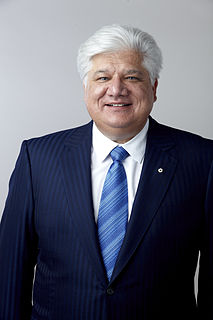 W
WMihal "Mike" Lazaridis, OC, O.Ont, FRS is a Greek-Canadian businessman, investor in quantum computing technologies, and founder of BlackBerry, which created and manufactured the BlackBerry wireless handheld device. Lazaridis served in various positions including Co-Chairman and Co-CEO of BlackBerry from 1984 to 2012 and Board Vice Chair and Chair of the Innovation Committee from 2012 to 2013. As a passionate advocate for the power of basic science to improve and transform the world, he co-founded Quantum Valley Investments in March 2013 with childhood friend and BlackBerry co-founder Douglas Fregin to provide financial and intellectual capital for the further development and commercialization of breakthroughs in quantum information science. In 1999 he founded Perimeter Institute for Theoretical Physics, where he also serves as Board Chair. In 2002, he founded the Institute for Quantum Computing. He is also a former chancellor of the University of Waterloo, and an Officer of the Order of Canada. With an estimated net worth of US$800 million, Lazaridis was ranked by Forbes as the 17th wealthiest Canadian and 651st in the world.
 W
WRoss Kohut Lowell was an American inventor, photographer, cinematographer, lighting designer, author and entrepreneur who changed the film production industry with two inventions: a widely used quick-clamp lighting mount system, and gaffer tape. He founded Lowel-Light, a manufacturer of highly portable lighting equipment used in TV, film and stage lighting, with 20 patents filed by Lowell. Lowell was the cinematographer for the Academy Award-winning short A Year Toward Tomorrow (1966), and he won an Academy Award for Technical Achievement in 1980 for his compact lighting system. The same year, he was nominated for Best Short Film, Live Action for his 14-minute film Oh Brother, My Brother (1979), depicting two of his young children. In 1987 Lowell was awarded the John Grierson Gold Medal by the Society of Motion Picture and Television Engineers (SMPTE), "in recognition of his many achievements, inventions, and innovative developments in the field of lightweight lighting and of grip equipment."
 W
WMetro-Goldwyn-Mayer Studios Inc. is an American media company, involved primarily in the production and distribution of feature films and television programs. One of the world's oldest film studios, MGM's corporate headquarters are located at 245 North Beverly Drive in Beverly Hills, California.
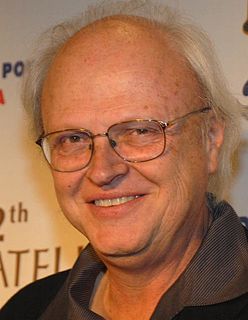 W
WDennis Muren, A.S.C is an American film special effects artist and supervisor. He has worked on the films of Steven Spielberg, James Cameron, and George Lucas, among others, and won nine Oscars in total: eight for Best Visual Effects and a Technical Achievement Academy Award.
 W
WThe National Film Board of Canada (NFB; French: Office national du film du Canada is Canada's public film and digital media producer and distributor. An agency of the Government of Canada, the NFB produces and distributes documentary films, animation, web documentaries, and alternative dramas. In total, the NFB has produced over 13,000 productions since its inception, which have won over 5,000 awards. The NFB reports to the Parliament of Canada through the Minister of Canadian Heritage. It has English-language and French-language production branches.
 W
WEdward John Neary was an American electronic engineer, specializing in audio processing equipment for motion pictures and broadcasting, as well as an Academy Award and Emmy Award winner.
 W
WPanavision is an American motion picture equipment company founded in 1953 specializing in cameras and lenses, based in Woodland Hills, California. Formed by Robert Gottschalk as a small partnership to create anamorphic projection lenses during the widescreen boom in the 1950s, Panavision expanded its product lines to meet the demands of modern filmmakers. The company introduced its first products in 1954. Originally a provider of CinemaScope accessories, the company's line of anamorphic widescreen lenses soon became the industry leader. In 1972, Panavision helped revolutionize filmmaking with the lightweight Panaflex 35 mm movie camera. The company has introduced other cameras such as the Millennium XL (1999) and the digital video Genesis (2004).
 W
WParamount Pictures Corporation is an American film production company and a subsidiary of ViacomCBS. It is the fifth oldest film studio in the world, the second oldest film studio in the United States, and the sole member of the "Big Five" film studios still located in the city limits of Los Angeles.
 W
WKenneth H. Perlin is a professor in the Department of Computer Science at New York University, founding director of the Media Research Lab at NYU, director of the Future Reality Lab at NYU, and the Director of the Games for Learning Institute. His research interests include graphics, animation, multimedia, and science education. He developed or was involved with the development of techniques such as Perlin noise, hypertexture, real-time interactive character animation, and computer-user interfaces such as zooming user interfaces, stylus-based input (Quikwriting), and most recently, cheap, accurate multi-touch input devices. He is also the Chief Technology Advisor of ActorMachine, LLC.
 W
WRichard Howland Ranger was an American electrical engineer, music engineer and inventor. He was born in Indianapolis, Indiana, the son of John Hilliard and Emily Anthen Gillet Ranger, He served in the U.S. Army Signal Corps during World War I, earning the rank of Major. After the war, he attended the Massachusetts Institute of Technology (MIT) from 1919 to 1923.
 W
WRepublic Pictures Corporation was an American motion picture production-distribution corporation in operation from 1935 to 1967, that was based in Los Angeles. It had studio facilities in Studio City and a movie ranch in Encino. It was best known for specializing in Westerns, serials, and B films emphasizing mystery and action. Republic was also notable for developing the careers of John Wayne, Gene Autry, and Roy Rogers. It was also responsible for the financing and distribution of several films directed by John Ford during the 1940s and early 1950s and one Shakespeare film, Macbeth (1948), directed by Orson Welles. Under Herbert J. Yates, Republic was considered a mini-major film studio.
 W
WRhythm & Hues Studios was an American visual effects and animation company that received the Academy Award for Best Visual Effects in 1995 for Babe, in 2008 for The Golden Compass, and in 2013 for Life of Pi. It also received four Scientific and Technical Academy Awards.
 W
WRKO Pictures was an American film production and distribution company. In its original incarnation, as RKO Radio Pictures, Inc. it was one of the Big Five studios of Hollywood's Golden Age. The business was formed after the Keith-Albee-Orpheum (KAO) theater chain and Joseph P. Kennedy's Film Booking Offices of America (FBO) studio were brought together under the control of the Radio Corporation of America (RCA) in October 1928. RCA chief David Sarnoff engineered the merger to create a market for the company's sound-on-film technology, RCA Photophone. By the mid-1940s, the studio was under the control of investor Floyd Odlum.
 W
WSelznick International Pictures was a Hollywood motion picture studio created by David O. Selznick in 1935, and dissolved in 1943. In its short existence the independent studio produced two films that received the Academy Award for Best Picture—Gone with the Wind (1939) and Rebecca (1940)—and three that were nominated, A Star Is Born (1937), Since You Went Away (1944) and Spellbound (1945).
 W
WDouglas Graham Shearer was a Canadian American pioneering sound designer and recording director who played a key role in the advancement of sound technology for motion pictures. The elder brother of actress Norma Shearer, he won seven Academy Awards for his work. In 2008, he was inducted into Canada's Walk of Fame.
 W
WAlvy Ray Smith III is an American computer scientist who co-founded Lucasfilm's Computer Division and Pixar, participating in the 1980s and 1990s expansion of computer animation into feature film.
 W
WJos Stam is a researcher in the field of computer graphics, focusing on the simulation of natural physical phenomena for 3D-computer animation. He achieved technical breakthroughs with the simulation of fluids and gases, new rendering algorithms and subdivision surfaces, which are a mix between two previously incompatible worlds of Nurbs- and polygon-modeling in 3D.
 W
WSylvania Electric Products was an American manufacturer of diverse electrical equipment, including at various times radio transceivers, vacuum tubes, semiconductors, and mainframe computers such as MOBIDIC. They were one of the companies involved in the development of the COBOL programming language.
 W
WTechnicolor is a series of color motion picture processes, the first version dating to 1916, and followed by improved versions over several decades.
 W
WDemetri Terzopoulos is a Distinguished Professor of Computer Science in the Henry Samueli School of Engineering and Applied Science at the University of California, Los Angeles, where he directs the UCLA Computer Graphics & Vision Laboratory.
 W
WThe Tiffen Company is a company in Hauppauge, New York, U.S. which manufactures filters for photography, and other professional film and photography-related products. Founded in 1945, by Sol Tiffen who brought his brothers Leo and Nat into the business, the company has won several Academy Awards for technical achievements in filtration. Nat Tiffen, as well as Ira Tiffen, each won technical achievement awards.
 W
WUnited Artists Corporation (UA), currently doing business as United Artists Digital Studios, is an American digital production company. Founded in 1919 by D. W. Griffith, Charlie Chaplin, Mary Pickford, and Douglas Fairbanks, the studio was premised on allowing actors to control their own interests, rather than being dependent upon commercial studios. UA was repeatedly bought, sold, and restructured over the ensuing century. Metro-Goldwyn-Mayer acquired the studio in 1981 for a reported $350 million.
 W
WPetro Vlahos was an American engineer and inventor, considered to be one of the pioneering scientific and technical innovators of the motion picture and television industries. Vlahos consistently devised solutions that made the modern blockbuster possible - he is remembered in particular for creating the Ultimatte process, which refined the colour process known as "bluescreening" or alternatively "greenscreening" to solve the transparency, edge-sharpening and "blue spill" problems of simple chroma keying, and combining this with motion control camera technology to create the modern special effects shot. This technology allows film editors in post-production to digitally remove an image of an actor working in front of a usually blue or green colored background and insert him into any computer-generated or other preexisting digital background. In recognition of his contributions, he was awarded multiple Oscars, as well as an Emmy Award.
 W
WWarner Bros. Pictures is an American film production and distribution company owned by the WarnerMedia Studios & Networks Group. Headquartered at the Warner Bros. Studios, Burbank.
 W
WAndrew Paul Witkin was an American computer scientist who made major contributions in computer vision and computer graphics.